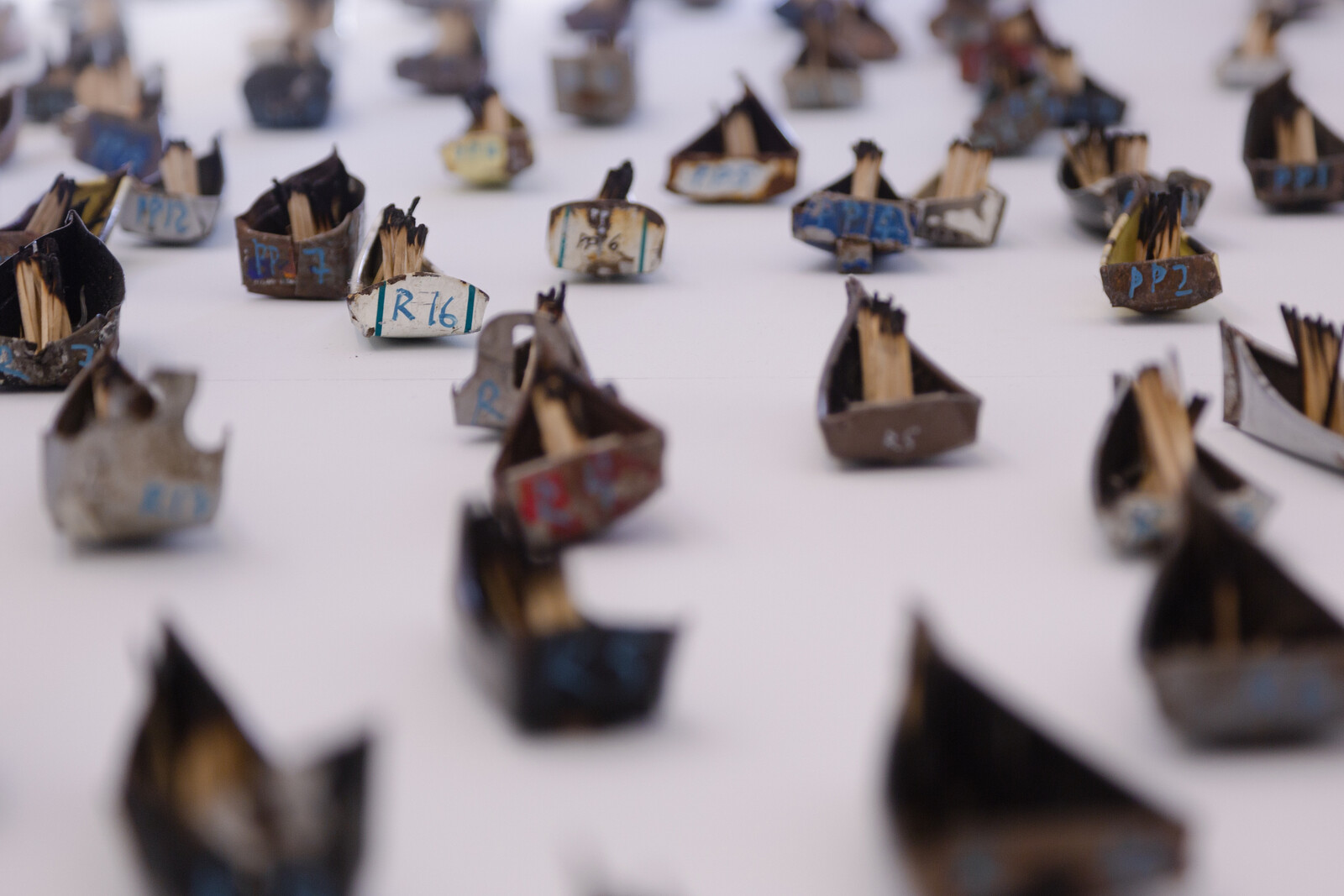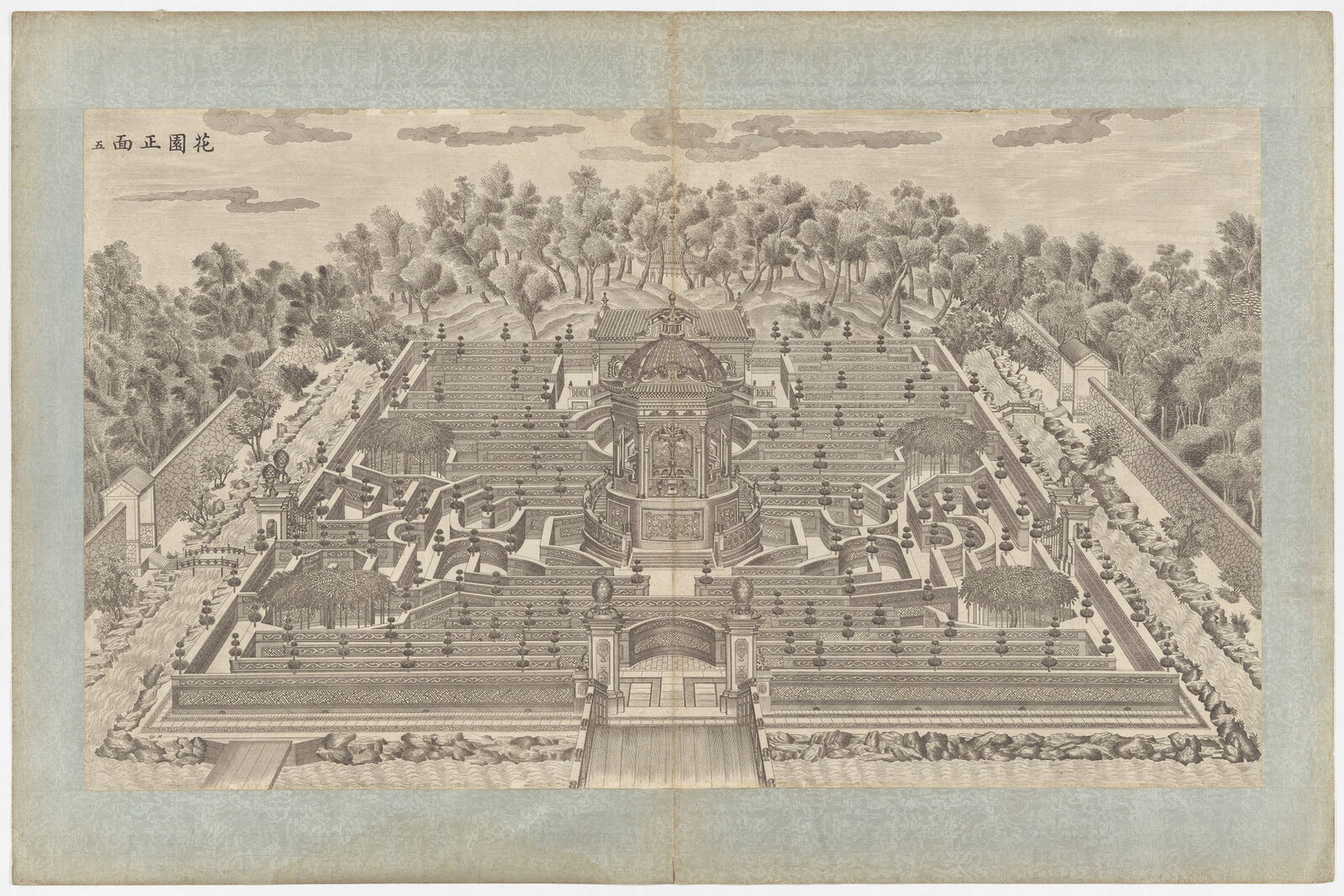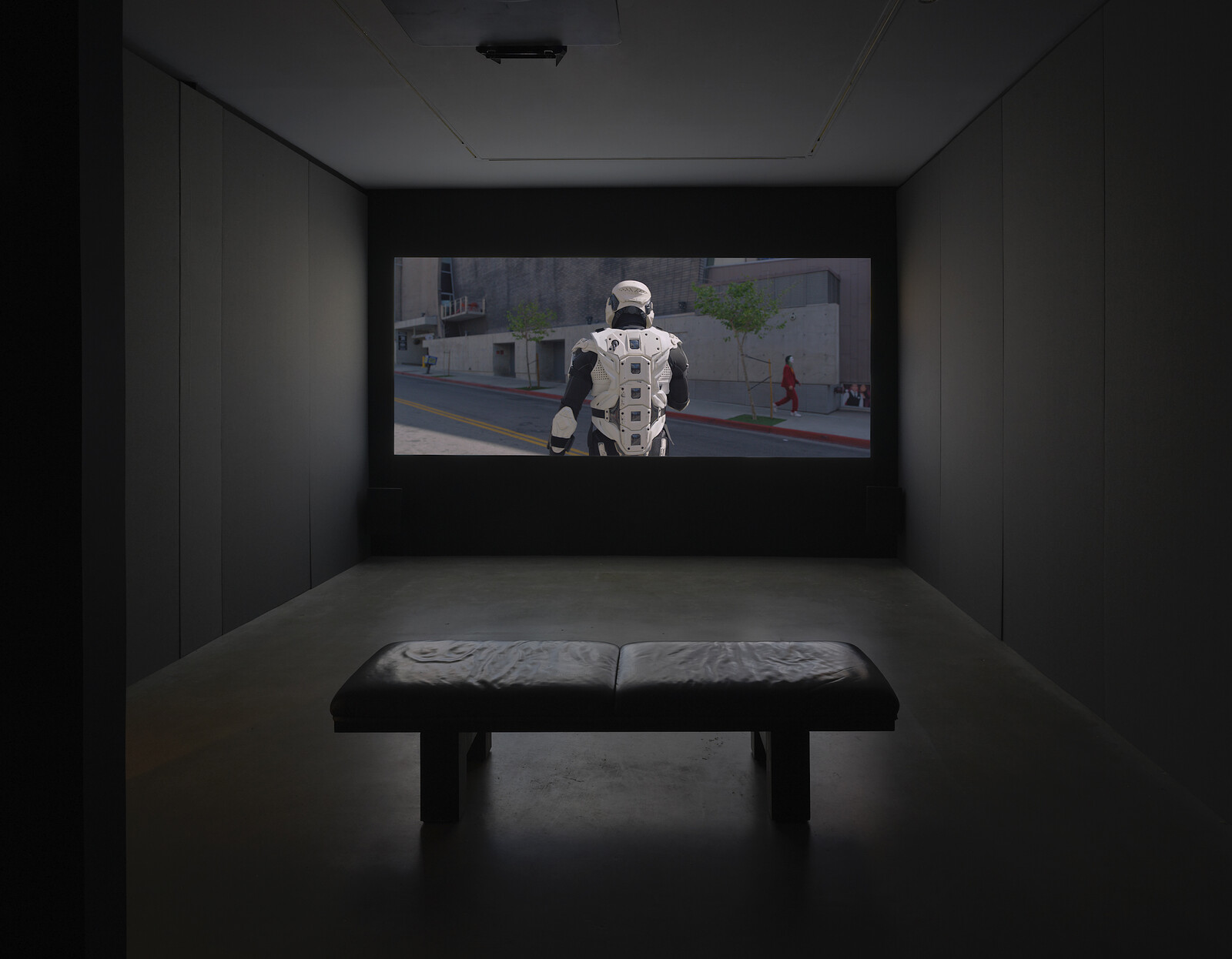Categories
Subjects
Authors
Artists
Venues
Locations
Calendar
Filter
Done
March 29, 2024 – Review
Issam Kourbaj
Tom Denman

These twinned exhibitions span Issam Kourbaj’s responses to the civil war that has carried on in his home country since the uprising against Bashar al-Assad in March 2011, expanding to consider related conflicts in the Middle East and the broader plight of refugees. Trained in Damascus, Leningrad, and London, Kourbaj moved to Cambridge in 1990 and has over the past thirteen years harnessed metaphor’s literal Greek meaning—“to carry across”—to the archival impulse to catalogue and connect.
Inspired by prisoners who smuggled their names out of a Syrian jail to let their families know they were alive, Urgent Archives, written in blood (2019) consists of disbound books and papers—perhaps the dead stock of an antiquarian bookshop or college library—loosely gridded on the floor, some “hovering” on blocks. In black, blue, and blood-red ink, Kourbaj has marked them with erratic lines and handwritten Arabic script. One book is stamped with the (English) words LEAVE TO REMAIN, signifying a refugee’s permission to stay in the UK—the granting of which is unguaranteed, racially biased, and often long-awaited in one of the country’s prisonlike detention centers.
Every day since the uprising, Kourbaj has sewn a date stone into a tent fabric to create Our exile …
February 28, 2023 – Feature
Dare to Know: Prints and Drawings in the Age of Enlightenment
R.H. Lossin

In 1784 a Berlin newspaper invited responses to the now-familiar question “What is Enlightenment?” Immanuel Kant’s reply retained the question as its title: a choice which has contributed to the sense that the question has, always, already been answered. But we keep asking it, and Kant’s “What is Enlightenment?” now ranks high among often cited and rarely read texts of the Western canon. It contains some dependable platitudes concerning free expression, as well as the exhortation “Sapere aude!” (“Dare to know!”), frequently taken as the most succinct version of his answer.
“Dare to Know: Prints and Drawings in the Age of Enlightenment” at the Harvard Art Museums brought together 150 prints, drawings, and books in order to examine how images contributed to the production and dissemination of Enlightenment knowledge between roughly 1720 and 1800. The accompanying catalog is an homage to Diderot and D’Alembert’s Encyclopédie (1751-72), with twenty-six alphabetically arranged articles on topics that shape our own understanding of eighteenth-century thought. According to Elizabeth Rudy and Tamar Mayer’s entry on “Time,” the very act of looking backward as a mode of inquiry is an intellectual operation that would not be possible without the notion of history that emerged in this …
November 9, 2021 – Review
Andrew Norman Wilson
Jared Quinton

Last month, a strike by over 60,000 members of the International Alliance of Theatrical Stage Employees (IATSE) was narrowly averted by last-minute negotiations with the Alliance of Motion Picture and Television Producers; the union will vote to ratify its new contract on Friday. This felt like a fitting backdrop for the opening of an exhibition which uses the tricks and trappings of the art world to make insidious labor politics slightly less ignorable. Andrew Norman Wilson’s solo presentation at the MIT List Visual Arts Center pairs two short features about workers navigating increasingly obsolete roles in corporate systems that produce mass media: the video Kodak (2019), a fictionalized account of a blinded former employee of the Kodak corporation, and Wilson’s new film Impersonator (2021), which follows a houseless, out-of-work character impersonator as he wanders the fringes of the Los Angeles film industry.
Wilson’s work treads the (often uneasy) territory between cinema and contemporary art. The two films, around 30 and 20 minutes respectively, play alternately on projection screens at either end of the List Center’s project space, which has been painted entirely black. Drawing techniques from documentary, montage, animation, and big-budget Hollywood, the works operate in a cinematic idiom that …
